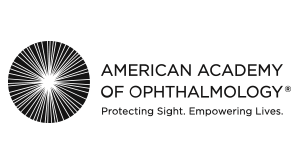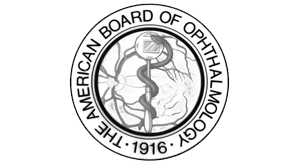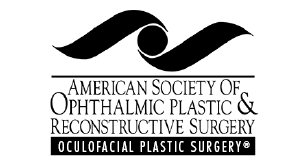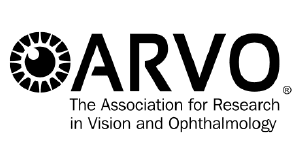Eyelid Lesions and Cancers


Eyelid lesions can be benign (non-cancerous) or malignant (cancerous), which is why it’s important to have them evaluated. Symptoms of eyelid lesions can range from being purely cosmetic concerns to causing irritation, discomfort, or even interfering with vision if the lesion is large enough to affect the eyelid’s function or the tear drainage system.
The first step in evaluating an eyelid lesion is a careful clinical exam of the eyelids and eyes. If warranted, a biopsy can be performed. If the lesion is malignant, then a complete excision may be required to allow for a cure.
Oculoplastic surgeons are particularly adept at evaluating the ocular surface, eyelids, and surrounding structures. Treatment of eyelid lesions is comprehensive and tailored to each patient’s specific needs.
In cases of malignant or cancerous lesions, oculoplastic surgeons also work closely with other specialists, like dermatologists or oncologists, for a multidisciplinary approach. If you have a concerning lesion, do not hesitate to make an appointment for an evaluation and possible biopsy.
Oculoplastic surgeons specialize in the evaluation, management, and treatment of eyelid lesions. Regular follow-ups are crucial for monitoring eyelid lesions, post-operative healing, and early detection of any recurrent lesions.
Eyelid lesions include any abnormal lumps or growths along the eyelid. They can greatly vary in appearance and color, and sometimes they can cause pain, redness, irritation, crusting, bleeding, or discharge. Some lesions might start to grow or enlarge over time.
It’s important to understand that while some eyelid lesions are benign (non-cancerous), others could potentially be malignant (cancerous).
The treatment for an eyelid lesion depends mainly on its nature – whether it’s benign (non-cancerous) or malignant (cancerous).
For benign lesions causing discomfort or affecting your appearance, the eyelid lesion can be excised or removed with a minor outpatient surgical procedure.
If a lesion is suspected to be malignant, a biopsy may be performed to confirm the diagnosis. In such cases, treatment may involve surgical removal of the lesion, possibly followed by reconstructive surgery to restore the appearance and function of the eyelid.
This might be performed in conjunction with a Mohs Micrographic surgeon, who specializes in a highly precise and effective way to remove skin cancer. It’s also important to monitor the area post-treatment for any signs of recurrence.
Regular follow-ups with an oculoplastic surgeon or dermatologist are crucial in managing these conditions effectively.
Lastly, it’s important to understand that each patient’s needs are unique and require an individualized approach to treatment.
View the Eyelid Lesion Surgery Video from the American Academy of Ophthalmology.
A chalazion is a small lump or swelling that can occur on the eyelid margin. It occurs when a Meibomian gland (oil gland in the eyelid) next to the eyelashes becomes blocked, leading to an accumulation of fluid, similar to a pimple.
Similarly, a hordeolum (also known as a stye) is caused by a bacterial infection or an oil gland or eyelash follicle. It can appear as a red, swollen, painful lump along the eyelid margin.
Both conditions are common and can affect individuals of any age. If a chalazion or hordeolum becomes bothersome and/or causes discomfort or vision issues, it can be treated with topical ophthalmic eye drops or ointment, administration of steroids directly into the lesion, or with surgery.
A common surgical procedure that treats chalazion is known as incision and drainage.
This is a minor outpatient procedure where the surgeon makes a small incision into the chalazion or hordeolum to help drain its contents. Post-operatively, patients typically experience immediate relief after healing from the procedure.
Mohs micrographic surgery is a highly precise and effective surgical technique that is used primarily to treat skin cancer, including on sensitive areas like the eyelids.
This is completed by a specialist who has additional training in Mohs micrographic surgery.
Mohs micrographic surgery is a specialized surgical technique where the surgeon removes a piece of the visible cancer and then examines it under a microscope to see if all the cancer cells have been removed.
This process is repeated until there are no more cancer cells. This process is very thorough and allows the surgeon to preserve as much healthy tissue as possible.
Not all eyelid cancers require this type of surgery. If treatment of your eyelid cancer requires the additional expertise of a Mohs micrographic surgeon, our office will help coordinate your care with this type of specialist.
Eyelid reconstruction is a specialized surgical procedure performed after Mohs micrographic surgery. After the cancer is fully removed, there is typically a wound or defect.
The next step is for the oculoplastic surgeon to come in and reconstruct the tissue to restore both the natural function and aesthetics, or normal appearance of the eyelid and the affected tissue.
The reconstruction process is intricate and requires an oculoplastic surgeon. The surgeon will take into account the complex anatomy of the eyelid, including muscles, skin, and the tear drainage system. The aim is to ensure that, after healing, your eyelid looks and works as naturally as possible.
Eyelid reconstruction surgery is typically completed on an outpatient basis, meaning patients can go home the same day after surgery.
In some cases, the reconstruction may involve multiple stages or procedures. In addition, for some patients, the eye will be patched or eyelids will be sutured shut temporarily. Each patient’s surgical needs are very unique and require an individualized approach to treatment. Post-surgery, patients will receive detailed care instructions to ensure the best possible results.
Eyelid lesions include any abnormal lumps or growths along the eyelid. They can greatly vary in appearance; they might be small or large, raised or flat, and can have different colors.
They may look like a mole, a pimple, a wart, or just a rough, scaly patch on the skin. Sometimes, they can cause pain, redness, irritation, crusting, mucous discharge, or scratching. Some lesions might start to grow or enlarge over time, while others maintain their size and do not enlarge. Some may even bleed and scab over.
Many people notice these lesions because they can affect the appearance of the eyelids or occasionally cause discomfort. Very rarely, eyelid lesions can also cause vision problems.
Treatment for an eyelid lesion depends largely on its nature, whether it’s benign (non-cancerous) or malignant (cancerous).
Not sure if your issue is an eyelid lesion? Learn more about all of our Functional and Reconstructive treatment options.
Oculoplastic surgeons specialize in the evaluation, management, and treatment of eyelid lesions. If you have an eyelid lesion or you are worried about an abnormal growth along the eyelid, schedule an appointment with Kahana Oculoplastic & Orbital Surgery today.
If you have an eyelid lesion or cancer, or you are worried about an abnormal growth along the eyelid, schedule an appointment to see us.







